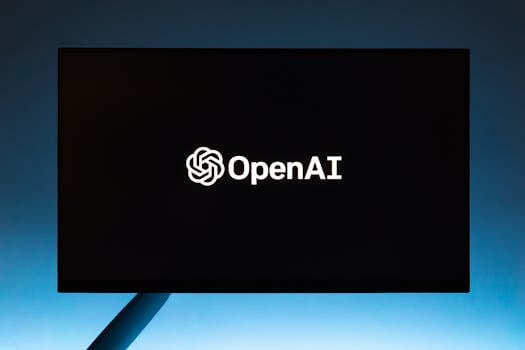👋 Welcome to The AlibAi
Hello and welcome to this edition of The AlibAi! In this issue, we are focusing on the recent OpenAI Sora leak which has sparked discussions about transparency and security in AI systems. We’ll explore the implications of this leak on marketing strategies and discuss how companies can proactively manage risks moving forward. Stay tuned for insights into how you can integrate learnings from this situation into your own AI deployment practices.

Image Source: Image by Pexels via Pexels
📰 Featured Story
A group of artists has leaked access to OpenAI’s anticipated Sora video tool in protest against perceived duplicity by the company. This act of defiance raises questions around the ethics of AI development in creative sectors. The Sora video model, which promises advanced text-to-video capabilities, was released amidst concerns of ‘art washing’ by OpenAI.
-
Artists argue that OpenAI’s initiatives do not sufficiently compensate the creators whose works are used to train AI systems.
-
The protest highlights ongoing tensions between AI companies and the creative community.
Access to Sora was made available without official consent, reflecting artists’ frustrations with lack of transparency. This protest signifies a broader movement against technology that artists feel undermines their contributions.
-
Many artists have united to voice their concerns through various online platforms.
-
The leak has sparked a discussion on legal implications and the future of intellectual property in the age of AI.
OpenAI’s response to the leak is still pending, raising speculation about its impact on the development of Sora. The incident underscores the need for clearer regulations regarding AI and intellectual property rights.
-
Regulations and guidelines may emerge as a result of mounting pressure from the creative industry.
-
Artists are increasingly advocating for fair compensation and transparency in how their work is utilized.
This situation could lead to significant changes in how AI tools engage with artistic content. Future developments will need to address these concerns to foster healthier relationships between artists and tech companies. For further insights on this developing story, you can learn more here.
📰 Top Stories
-
Google Vets Raise $56 Million for AI Initiative – Former Google employees secure funding to drive AI innovation towards an ‘Android-like moment.’
-
Inside Elon Musk’s Quest to Beat OpenAI at Its Own Game – An overview of Musk’s ambition with xAI and its competitive positioning against OpenAI.
-
Biden Proposes Guardrails on Health Care AI – The Biden administration suggests new regulations for AI in healthcare to improve access and safety.
-
ElevenLabs’ New Feature Competes with NotebookLM – Voice AI startup ElevenLabs introduced a feature called GenFM for creating multi-speaker podcasts.
-
AI Helps India’s Meesho Cut Customer Call Costs by 75% – Meesho implemented a generative AI-powered voice bot to enhance customer support.
🔦 Spotlight: AI Breakthrough of the Week
This week, a significant AI development comes from Meesho, an Indian e-commerce platform that has successfully implemented a generative AI-powered voice bot to enhance customer support. This innovation has led to a remarkable 75% reduction in customer call costs, showcasing the efficiency that AI can bring to business operations. By leveraging AI, Meesho is not only cutting expenses but also improving response times and customer satisfaction, a critical factor in retaining clientele in the competitive e-commerce landscape.
The implications of this advancement are substantial across various industries. Businesses can now employ similar AI technology to streamline their customer service operations, ultimately leading to cost savings and improved engagement. As companies look to adopt AI solutions, Meesho’s achievement serves as a strong example of how generative AI can deliver real-world benefits. For more insights on this impactful AI implementation, check out the full article here.
🏢 AI in Action: Real-world Applications
Coca-Cola has harnessed AI technologies to refine its marketing strategies. By employing advanced algorithms for consumer data analysis, the company has identified trends and preferences that enable targeted advertising campaigns. This data-driven approach allows Coca-Cola to create personalized interactions that significantly enhance customer engagement. For more details, check out the full story here.
Similarly, Shopify has integrated AI in its platform, assisting small businesses with customer relationship management. The AI tools provide insights into customer behaviors, enabling merchants to strategically tailor their offerings. This adoption has resulted in increased sales and streamlined inventory management for many Shopify users. Discover how they’re making an impact here.
🧠 Expert Corner
In the world of AI, mitigating the risk of hallucinations is crucial for implementing successful applications. Models tend to generate information that sounds plausible but can often be incorrect. This issue is especially pronounced when the input prompts are open-ended or broad. To enhance accuracy, it’s essential to limit the scope of your queries. By providing specific instructions, you can steer the model towards producing more relevant and accurate outputs. Narrowly defined tasks allow for better control, ensuring the results align closely with your requirements.
Furthermore, adopting a precise and logical communication style when discussing AI technologies can significantly improve understanding and decision-making. Rather than resorting to storytelling or overly complex explanations, strive to deliver information in a straightforward manner. This clarity minimizes the noise and focuses on the actionable insights that marketing professionals require to effectively utilize AI tools in their strategies.
-
Formulate specific and narrowly defined questions to limit scope.
-
Avoid vague language that could lead to misinterpretations.
-
Emphasize practical applications of AI rather than theoretical concepts.
-
Test different prompts to find the most effective way to communicate with the model.
-
Regularly review output for relevance and accuracy to adapt future queries.
💬 Community Buzz
Here’s an overview of recent discussions surrounding AI, reflecting on leaks, regulatory changes, market shifts, and sentiment in the community.
OpenAI’s Sora Appears to Have Leaked – Recent leaks have unveiled a frontend for OpenAI’s Sora, permitting users to generate videos, igniting discussions about control over API access. The community is split between excitement and skepticism, particularly regarding output quality and potential restrictions on access following this incident.
ChatGPT Search vs. Perplexity: A Comparative Overview – A user shared insights comparing the search functionalities of ChatGPT and Perplexity, noting improved precision and interface for ChatGPT while recognizing Perplexity’s real-time search prowess. This has created a competitive atmosphere as users evaluate the applications of these tools in their workflows.
OLMo 2 Models Released – The release of OLMo 2 models from AllenAI has drawn attention, particularly for their multilingual capabilities and performance benchmarks versus existing models. The response has been largely positive, with a clear demand for broader multilingual support in future iterations.
Introducing Hugging Face’s SmolVLM – Hugging Face’s SmolVLM, designed for on-device inference, has intrigued users, though mixed results have been reported across different setups. The overall reaction remains optimistic, with calls for enhanced optimization to realize its full potential.
AutoGPT – This project is making strides in autonomous AI capabilities, with discussions focusing on new features like 3D printing through APIs. The ongoing engagement from developers showcases a proactive community eager for innovation and improvement.
Stable Diffusion WebUI – The community is addressing ongoing GPU recognition challenges and refining usability aspects of the Stable Diffusion WebUI. Developers are actively discussing solutions to enhance user experience and remove bottlenecks, reflecting the ongoing evolution in the AI landscape.
🔬 Top Research
Here are some of the most recent research papers that could significantly influence how marketing professionals utilize AI technologies:
-
LLM2CLIP: Powerful Language Model Unlocks Richer Visual Representation: This study demonstrates how large language models can enhance CLIP’s image-text representation capabilities through a novel fine-tuning method, offering practical applications in content marketing by improving image tagging and searchability.
-
Adaptive Deployment of Untrusted LLMs Reduces Distributed Threats: This paper introduces a framework for managing deployment strategies of untrusted LLMs, which can help marketing professionals implement AI tools while safeguarding against potential risks and ensuring consistent performance.
-
Low-Bit Quantization Favors Undertrained LLMs: Scaling Laws for Quantized LLMs with 100T Training Tokens: The findings indicate that low-bit quantization is beneficial for undertrained LLMs, offering insights for marketers on optimizing their model training strategies and resource allocation for better performance.
-
LOLA: LLM-Assisted Online Learning Algorithm for Content Experiments: Featuring a framework that combines LLMs with adaptive experimentation, LOLA enhances content delivery and engagement metrics, making it a valuable tool for marketers focused on optimizing campaigns.
🛠️ Emerging Tools and Technologies
Check out these innovative AI tools that are gaining traction and can help optimize your marketing strategies:
-
Video Ocean: This platform allows users to create stunning videos from text and images in minutes, cutting down the traditional video production time. Tailored for marketers, it helps convey brand stories effectively without needing prior video editing skills.
-
Tripo AI: A 3D modeling tool designed for web use, Tripo AI enables users to generate immersive 3D models for various applications. Ideal for creatives seeking to enhance their marketing through interactive content.
-
AKOOL Face Swap: Revolutionizing personalized visual marketing, this tool allows marketing teams to create engaging campaigns with advanced face-swapping capabilities, reducing the need for extensive post-production.
-
Synthesys Studio: This AI content suite enables the creation of professional AI videos and voiceovers. It’s particularly beneficial for marketers looking to maintain brand consistency while efficiently scaling content production.
-
Pictory: Pictory specializes in converting text scripts into engaging videos using stock footage, streamlining content marketing strategies with its user-friendly interface.
💡 Final Thoughts
As we wrap up this edition of The AlibAI, remember that the world of AI is evolving rapidly, and there are numerous opportunities waiting to be explored. The insights we’ve covered, from Nvidia’s innovative audio generator to the practical applications of AI in business, highlight the importance of staying informed and adaptable. I encourage you to reflect on these themes and apply the knowledge gained today in your own marketing strategies. Your thoughts and experiences are valuable—please share them with us! Let’s keep the conversation going as we navigate this transformative landscape together.

